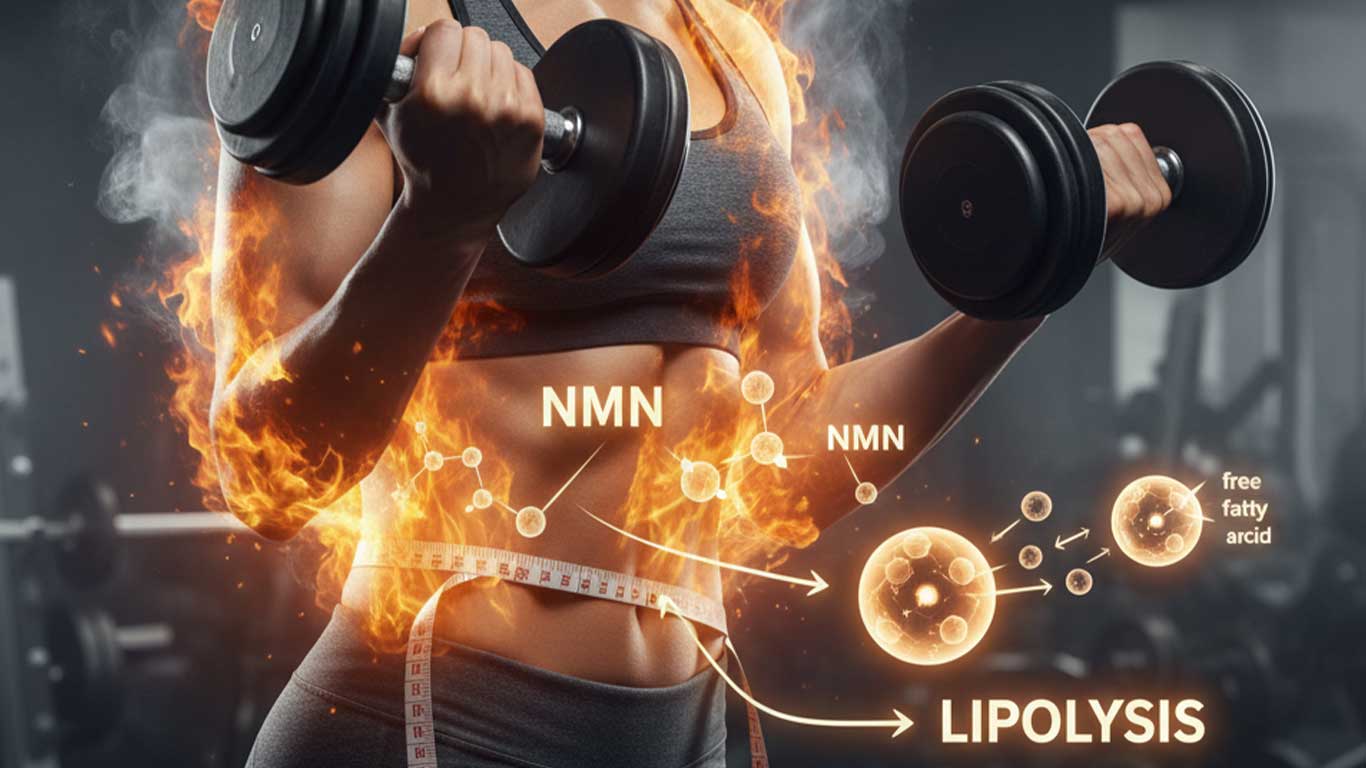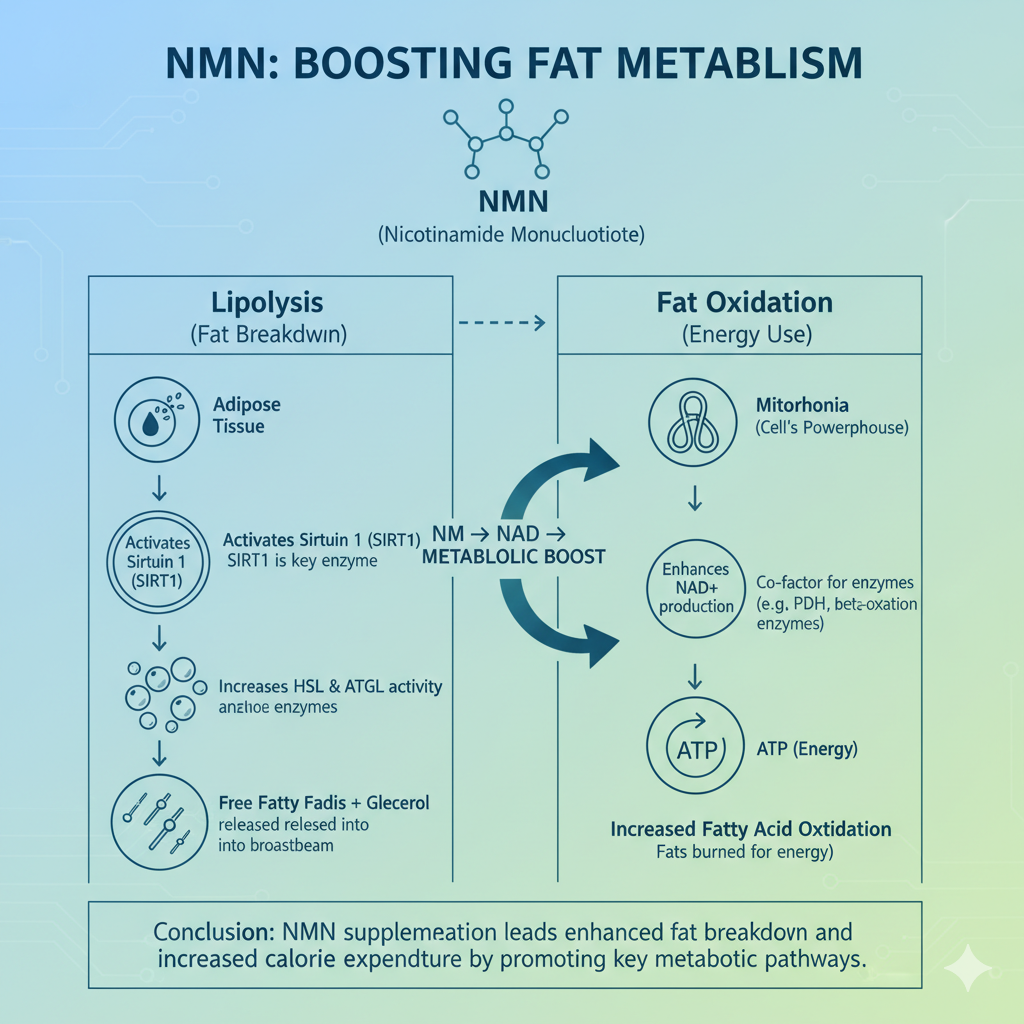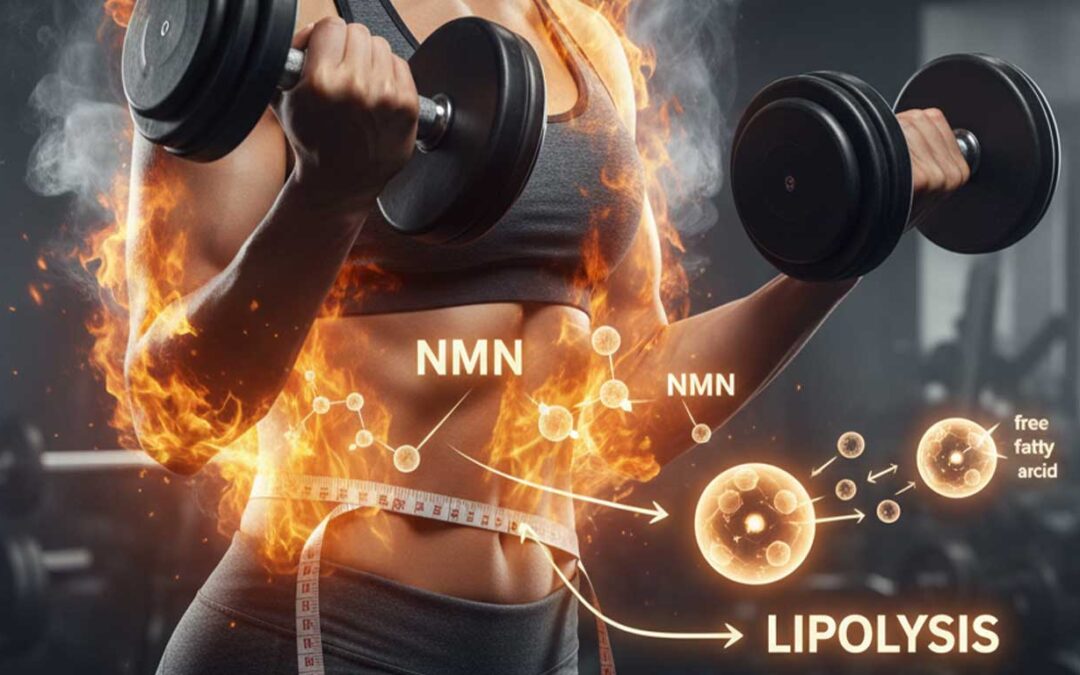NMN & Resveratrol enhances lipolysis and fat burning

Everyone Takes NMN for Longevity — But It Could Melt Fat Too – This video discusses NMN’s role in cellular energy (NAD+ production) and how it influences fat loss and mitochondrial efficiency.

⚙️ The Mechanism Explained (Based on Scientific Literature)
The core of NMN’s effect on fat metabolism is its role as a precursor to Nicotinamide Adenine Dinucleotide (NAD+), a vital coenzyme involved in cellular energy and signaling.
- Boosting NAD+ Levels: NMN is converted into NAD+ inside cells. NAD+ levels naturally decline with age, which contributes to metabolic dysfunction.
- Activating Sirtuin 1 (SIRT1): SIRT1 is an NAD+-dependent protein deacetylase. Increased NAD+ levels activate SIRT1, which is often referred to as a “longevity” gene.
- Enhancing Lipolysis (Fat Breakdown):
- SIRT1 activation stimulates the AMPK (AMP-activated protein kinase) pathway.
- The SIRT1-AMPK axis leads to the upregulation of ATGL (Adipose Triglyceride Lipase), a key enzyme that initiates the breakdown of triglycerides (stored fat) into free fatty acids and glycerol. This process is lipolysis.
- Increasing Fat Oxidation (Fat Burning):
- NAD+ is essential for the function of enzymes involved in the mitochondrial β-oxidation pathway. β-oxidation is the process where free fatty acids (released from lipolysis) are transported into the mitochondria and burned for energy (ATP).
- By boosting NAD+ and enhancing mitochondrial function, NMN helps the cell utilize the free fatty acids for energy, completing the “fat burning” cycle.
In summary: NMN provides the fuel (NAD+) to activate the key metabolic regulators (SIRT1 and AMPK), which both breaks down stored fat (lipolysis) and increases the rate at which the fat is used for energy (β-oxidation).

